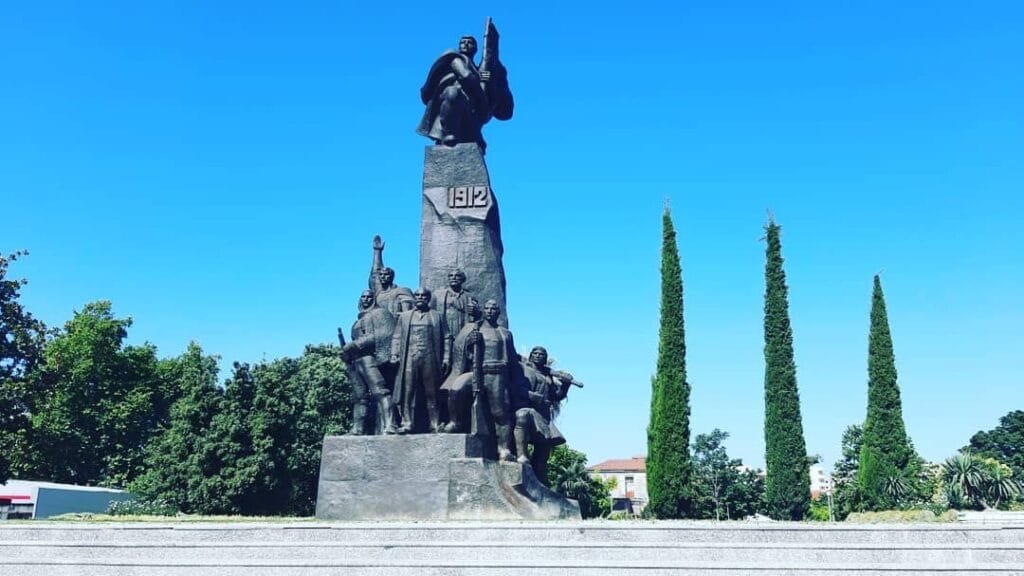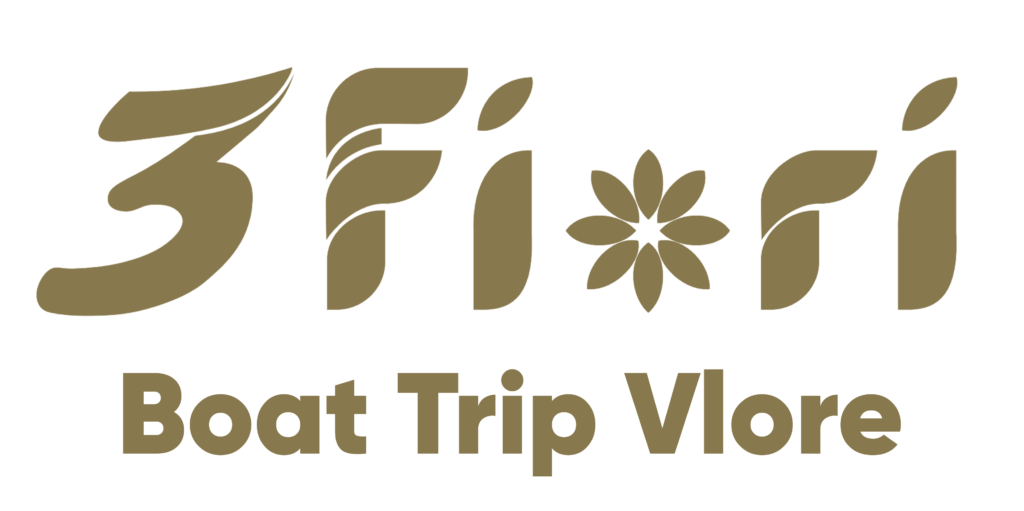Intro
The Independence Monument, prominently situated in the heart of Vlore, Albania, stands as a powerful testament to the nation’s enduring spirit and historical significance. Erected to commemorate Albania’s declaration of independence from the Ottoman Empire on November 28, 1912, this monument has become a symbol of national pride and a focal point for both locals and tourists alike.
Located in Flag’s Square, a central and bustling area of Vlore, the Independence Monument captures the attention of visitors with its striking design. The monument features a grand statue of Ismail Qemali, the pivotal figure in Albania’s independence movement, holding the Albanian flag aloft. This vivid representation not only celebrates the historical event but also instills a sense of reverence and patriotism among those who visit.

Surrounding the monument, Flag’s Square itself is a vibrant and lively space. It is a popular gathering spot where locals and tourists converge to soak in the rich history and culture of Vlore. The square is often abuzz with activities, from local markets to cultural events, making it an ideal location for the Independence Monument. The juxtaposition of the monument’s solemnity with the square’s dynamic atmosphere creates a unique blend of historical reflection and contemporary vibrancy.
Visiting the Independence Monument offers a profound journey through Albania’s past, providing insight into the nation’s struggle for sovereignty and the resilience of its people. It serves as a reminder of the sacrifices made for independence and the enduring legacy of those who fought for the nation’s freedom. For anyone exploring Vlore, the Independence Monument is an essential stop that encapsulates the essence of Albanian identity and heritage.
Historical Significance and Background
The Independence Monument of Vlore stands as a profound symbol of Albania’s journey towards sovereignty, reflecting a tumultuous era of national awakening in the early 20th century. The backdrop to this significant period is marked by the declining Ottoman Empire, which had ruled Albania for several centuries. Amidst the waning Ottoman control, a surge of national consciousness began to stir among the Albanian people, driven by a desire for self-determination and cultural preservation.
A pivotal figure in this movement was Ismail Qemali, a statesman and visionary leader who galvanized the Albanian national movement. Born in 1844, Qemali pursued a life dedicated to advocating for Albanian rights and ultimately led the charge for independence. His efforts culminated on November 28, 1912, a day etched in the annals of Albanian history. On this day, Qemali, alongside 83 delegates from various regions, proclaimed Albania’s independence from the Ottoman Empire in the coastal city of Vlore.

The declaration of independence was not merely a political act but a monumental step towards the realization of a long-cherished dream of the Albanian people. It signaled the birth of a nation striving to forge its identity amidst the complexities of Balkan geopolitics. The Independence Monument in Vlore, erected to commemorate this historic event, serves as a lasting tribute to the resilience and indomitable spirit of the Albanian people.
Standing tall in the heart of Vlore, the monument is not only a reminder of the struggles faced but also of the triumphs achieved in the quest for national sovereignty. It encapsulates the essence of a pivotal moment when Albania asserted its place on the world stage, guided by the vision and leadership of Ismail Qemali. Through its historical significance, the monument continues to inspire a sense of pride and unity among Albanians, reinforcing the enduring legacy of their journey to independence.
Architectural Features and Design
The Independence Monument of Vlore, Albania, stands as a testament to the nation’s rich historical tapestry and its enduring quest for freedom. The monument’s design is the collective effort of distinguished sculptors and architects, who have meticulously crafted an edifice that embodies both artistic finesse and symbolic gravitas.
Central to the monument is the statue of Ismail Qemali, a pivotal figure in Albania’s history. Qemali, who proclaimed Albania’s independence in 1912, is depicted in a commanding pose, symbolizing leadership and resilience. The statue is crafted from bronze, a material chosen for its durability and historical significance. Flanking Qemali are representations of other notable figures who played crucial roles in the struggle for independence, each sculpted with attention to detail that captures their individual contributions and the collective spirit of the Albanian people.
The architectural design of the monument is infused with elements that reflect Albania’s cultural and historical narratives. The base of the monument, constructed from locally sourced stone, provides a robust foundation that signifies the strength and permanence of the nation’s independence. Intricate carvings and inscriptions adorn the stone, illustrating key events and milestones in Albania’s path to sovereignty. These artistic elements not only enhance the monument’s aesthetic appeal but also serve as an educational tableau, offering visitors insights into the country’s storied past.

The surrounding landscape is thoughtfully integrated into the monument’s design, with carefully planned greenery and pathways that guide visitors through the site, encouraging reflection and contemplation. The overall layout is both grand and accessible, inviting individuals to engage with the monument and its historical context on multiple levels.
In its entirety, the Independence Monument of Vlore is more than a mere structure; it is a symbolic representation of Albania’s journey toward self-determination. From the choice of materials to the portrayal of historical figures, every aspect of its design is imbued with meaning, making it a poignant landmark that continues to inspire pride and remembrance among the Albanian people.
Visitor Experience and Nearby Attractions
Visiting the Independence Monument of Vlore offers a profound journey through Albania’s rich history. Located in Flag’s Square, this iconic monument stands as a tribute to the nation’s declaration of independence in 1912. The best time to visit is during the spring and early autumn months when the weather is pleasant, allowing for a comfortable exploration of the site and its surroundings.
Entry to the Independence Monument is free, making it accessible for all visitors. For those looking to delve deeper into the historical context, guided tours are available. These tours provide insightful commentary on the significance of the monument and the pivotal events that unfolded in Vlore, enhancing the visitor experience.

While in Vlore, there are several nearby attractions worth exploring. The picturesque Vlore coastline is just a short stroll away, offering stunning views of the Adriatic Sea and opportunities for leisurely walks or picnics. The Muradie Mosque, an architectural gem dating back to the Ottoman era, is another must-see site. Its unique design and historical value make it a significant cultural landmark.
The Ethnographic Museum of Vlore is also in close proximity. This museum provides a fascinating glimpse into the traditional lifestyle and customs of the Albanian people, featuring an array of artifacts, clothing, and tools from various historical periods.
Visitors can enhance their experience by exploring local eateries that offer authentic Albanian cuisine. Restaurants and cafes around Flag’s Square serve delicious dishes, from seafood specialties to traditional meat-based meals. For those looking to take home a piece of Vlore, numerous souvenir shops are scattered throughout the area, offering a variety of local crafts and memorabilia.
Flag’s Square is also a hub for local events and celebrations. Throughout the year, the square hosts various cultural and festive events, providing visitors with a taste of the vibrant local culture. Whether it’s a music festival, a traditional dance performance, or a public celebration, these events add a lively dimension to any visit.
Overall, a visit to the Independence Monument of Vlore and its surrounding attractions promises a well-rounded and enriching experience, blending history, culture, and the scenic beauty of this charming coastal city.


